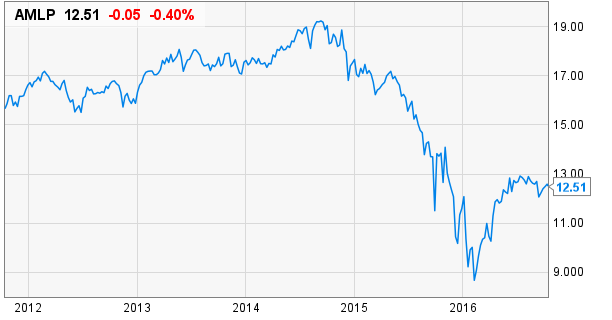With interest rates still in the basement since the end of the Great Recession, investors have looked for yields and income anywhere they could find it. And that meant treading into pretty exotic locales.
Everything, from preferred stocks to real estate investment trusts (REITs), has gotten the nod of dividend seekers over the last few years. And one of the biggest beneficiaries has been master limited partnerships (MLPs).
Drawn to the sector’s high yields and tax advantages, billions in investor money, both retail and institutional, has flooded the sector.
And that has turned out to be a problem. The once-stable business model of providing logistics solutions for the energy industry was upended and the main indexes tracking MLPs saw heavy losses. Many investors were blindsided by the drop in prices for an asset class they perceived to be safe.
Things have brightened recently for the MLPs, but don’t let the euphoria fool you. Some of the risks are still there, and investors may be setting themselves up for failure again.
Learn more dividend investing ideas in our Dividend Investing Ideas center.
The Ignored Risk
For most investors, MLPs equal pipelines. The sector was originally created when Congress sought to increase investment in declining energy infrastructure. It gave tax breaks to firms building out the needed gateways between various oil fields and downstream facilities, and that meant pipelines.
The idea that these pipelines were built on volumes – not on prices for the underlying commodity – and on “take or pay” contracts, was normal for the sector. And the vast bulk of MLPs still operates under this guise.
But that’s not true for all of them. Take Western Gas Partners (WES ) for example, which makes its money gathering and processing oil and natural gas directly from wells, as does Antero Midstream Partners LP (AM ). While the principles are the same, they are very different animals than the MLPs everyone is familiar with.
And that is the problem. Many MLPs these days make their money doing activities other than just shipping crude oil or natural gas across state lines. The processing of natural gas liquids (NGLs) is based on price; so is gathering, in the sense that if a producer can’t make money from a well, it won’t ship any volume. And marketing, downstream activities and trading, which also fall under some MLPs, are a direct bet on prices.
The point is, many MLPs don’t only make their money on the volume of crude oil shipped anymore. These MLPs aren’t “utilities” anymore.
The problem is when crude oil, natural gas and even coal prices dip, you start to see some big problems for MLPs, which is what happened in 2015. The Alerian MLP ETF (AMLP), which acts as a sector proxy, was hit hard as crude oil fell and sectors ran for the hills.
On our MLPs page, we list more than 100 MLPs currently trading on Wall Street. You can find out their latest dividend yield, share price, annualized dividend and the ex-dividend date and even download it in a spreadsheet.

You also see big dividend cuts when crude oil, natural gas and coal prices dip. Pipeline leaders Kinder Morgan (KMI ) and Williams (WMB ) both saw dividend cuts entirely driven by companies outside the core pipeline business struggling under the weight of lower prices.
MLPs Coming Back From the Dead
In recent weeks, crude oil has bounced back, which is great news for MLPs. Higher crude oil prices means it’s game-on for the sector, and investors have jumped back in headfirst. MLPs have seen swift inflows in recent months. That’s evident by the AMLP’s pop upwards in 2016.
But the risks are still there – if anything, they’ve gotten bigger.
The sector continues to rely more on the processing of natural gas and other activities to make profits and generate their hefty cash flows. Over the last year, M&A have continued to rise and many pipeline players have found themselves expanding into these areas to find growth. But there just aren’t many areas that need a new large intrastate trunk line to carry oil or natural gas. That’s not necessarily a bad thing – growth is good. But for investors looking for a steady yield from a toll-road-like investment, that may not be such a great shift.
In other words, many retail investors, drawn in by high yields and recent returns, may be setting themselves up for another disaster.
Download our free report on the essentials of MLPs investing for more infro.
MLPs Are Great, If You Get the Risks
As an asset class, MLPs are really great. But they’re great because of their overall total returns, which mean dividends and capital appreciation. They were never really meant to be strictly income plays. The recent changes to their business model ultimately highlight that fact.
MLPs aren’t the same asset class that they used to be; investors just need to understand before they get burned. They are now tied much more closely to commodity prices than some investors realize. That’s something for investors seeking steady dividends to keep in mind when selecting an MLP to buy. You may not want to bet too much on the asset class for high yields.
Go premium for free by signing up to our free newsletter.





